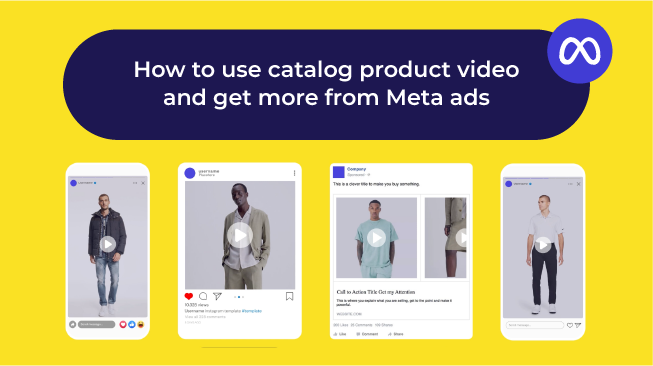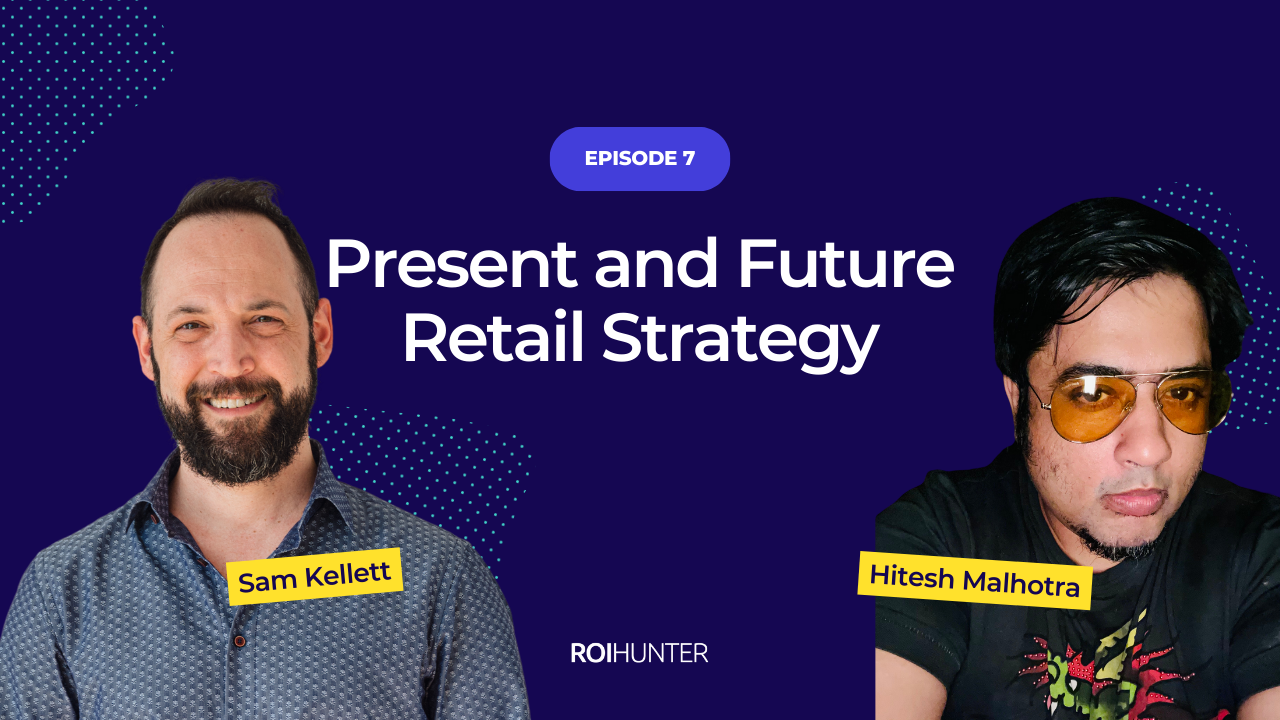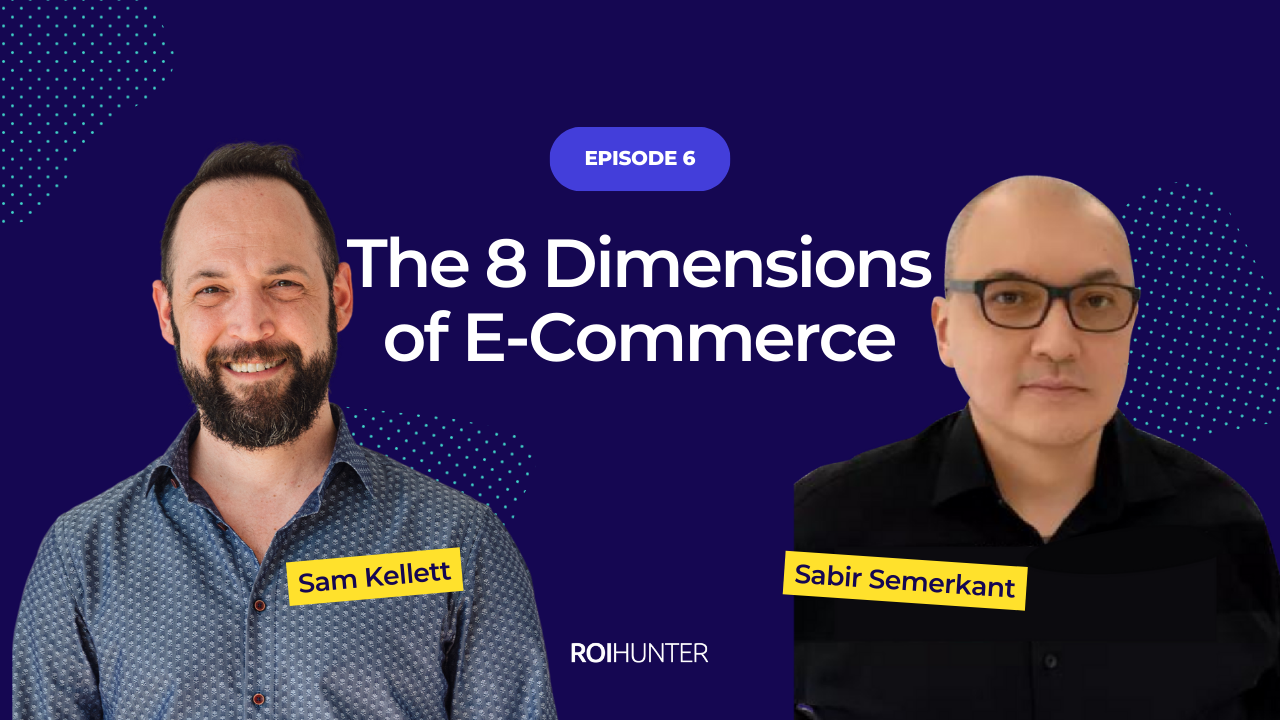Not in the mood to read? Listen to this article:
“Bestsellers,” are your top performing products in terms of total revenue. These products are your known winners, and are effective for top of the funnel prospecting. If your business goal is to scale reliably, you need to find which products are your bestsellers, and ensure they are the first products new customers see.
Table of contents:
Overview of concepts
Before we get into some of the more advanced strategies and techniques, here’s a quick review of everything we’ll be discussing. Click here if you’d like to skip this part and go straight to the more complex content.
Dynamic ads
Simply put, a dynamic ad is a banner ad that automatically changes based on the person using it. The idea is that rather than creating thousands of ads for each of your products, you can instead connect your catalogue to Meta or Google, and they can pick which product to display based on what they know about the customer viewing it.
If you advertise on Meta, you’ve likely used or come across their dynamic product ads (DPAs) and dynamic ads for a broad audience (DABA). DPAs retarget your site visitors with promotions for products those users have shown interest in. DABA are used to target Meta users who have not been to your site, but have shown interest on other sites in products similar to what you sell.
Here’s a generic, static ad. Static ads, as their name would suggest, remain the same no matter who sees them. They don’t require as much prep as a dynamic ad, but the lack of personalisation also means lower click-through and conversion rates.
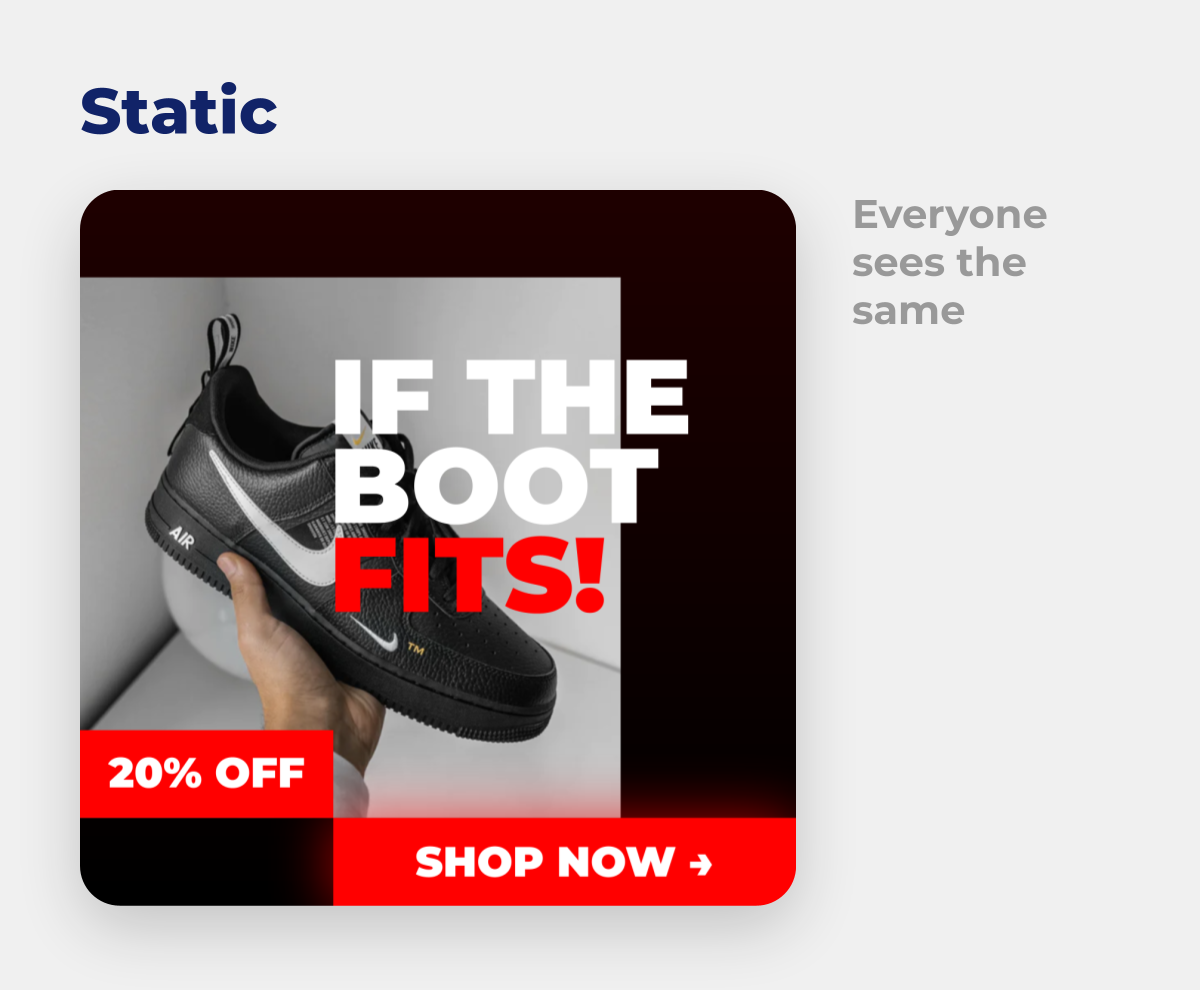
Here’s an example of a dynamic ad, which is connected to the products in your catalogue. When I encounter this ad on Facebook, the decision on which product to display to me happens in real-time, based on my previous actions on this site (in the case of DPA), or on similar sites (in the case of DABA)
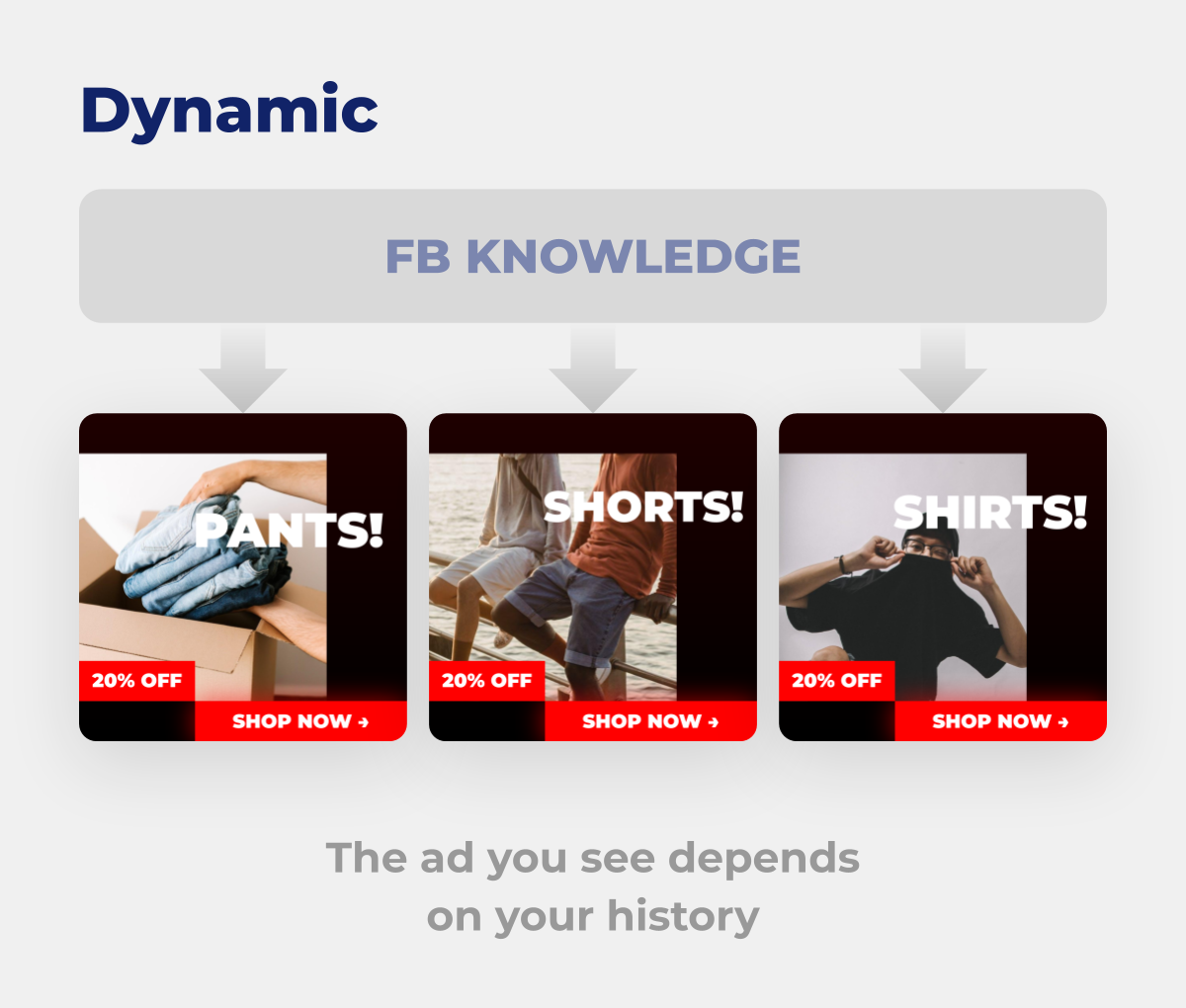
Bestsellers
As mentioned in the introduction, your bestsellers are your top percentage of products in terms of total revenue. When we use a bestseller product set, we’re generally referring to your top-selling 20% of products, though it could be less or more depending on your catalogue.
The non-bestsellers in your catalogue (the other 80%) are called the longtail. In a typical e-commerce catalogue, the top 10% of products generate about 80% of the revenue.
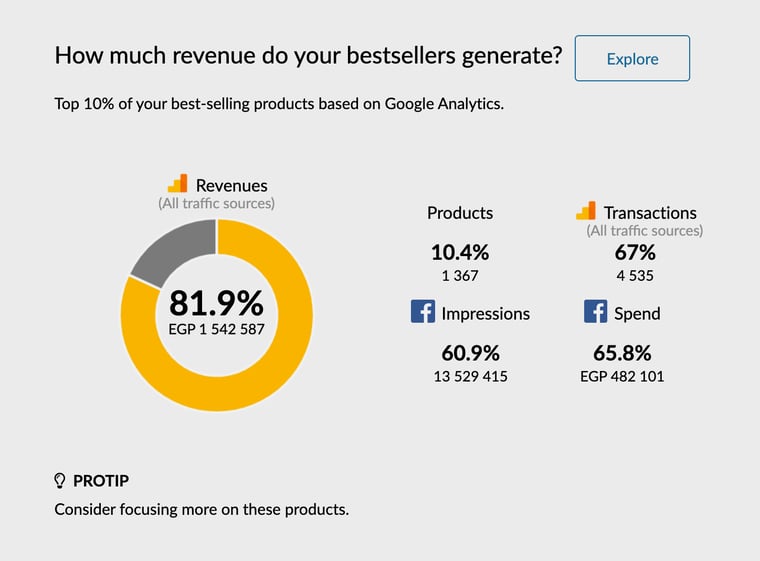
Why is that? Part of the reason comes from the idea of shelf space. If you’re running a brick and mortar shop you have a limited amount of shelf space, and therefore, a limited number of products that you can carry. E-commerce shops don’t have this shelf-space limitation, which can leave them with an enormous longtail of products.
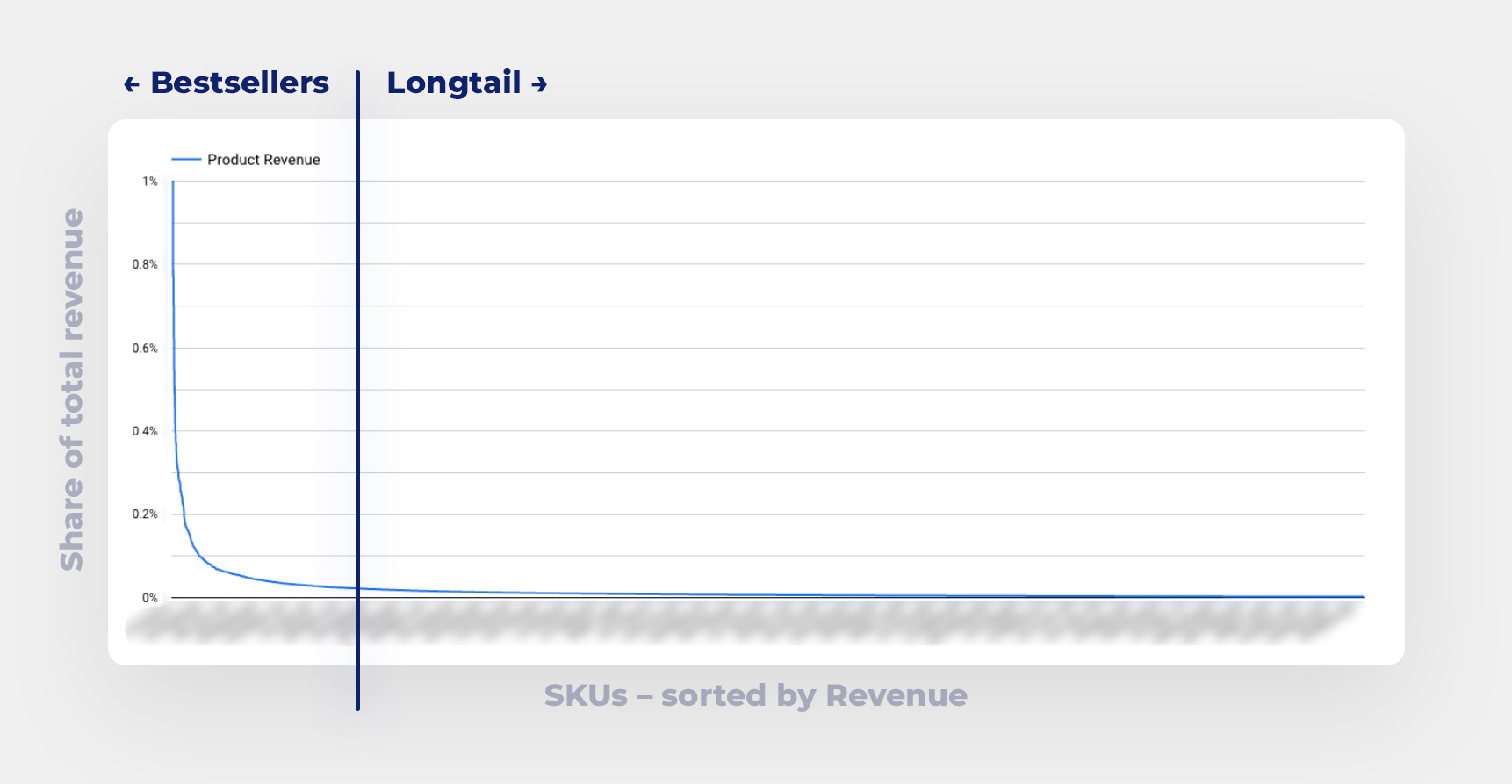
By focusing on just the bestsellers and excluding the longtail that makes up the other 80% of the catalogue, retailers can ensure that impressions will only be spent promoting popular items.
“But wait!” I hear you say. “Don’t the products from the longtail need promotion the most, because they’re not bestsellers?” The answer is, sometimes. But not when scaling. The algorithms target a lookalike audience that is based on your current users. Your current users are the ones who made those products your bestsellers, so there’s a strong reason to believe the same items will sell well with a similar audience. Bestsellers are an ideal product set for scaling, because when you’re approaching new potential customers, you want to be certain you’re putting your best foot forward. Prospecting campaigns should entice shoppers to make that first purchase by showing them the items that you know, statistically, they are most likely to buy.
Scaling dynamic ads
The difficulty in scaling standard dynamic ads becomes apparent if you’re working with a large product catalogue. While the algorithms on Meta and Google are testing the performance of your products, they’re only able to test a small fraction of a catalogue made up of thousands, or even millions of products.
Rather than relying on the algorithms alone, it’s more effective to help those algorithms along by creating separate product sets for each of your goals, made up of products you already know will help achieve that goal.
If your goal is to scale your ad spend, you want to build a product set of bestsellers. Once again, by using a product set of bestsellers for your prospecting, you’re ensuring that every product promoted to new potential customers is one that has historically been popular.

“With ROI Hunter we were able to effectively reach and convert an ever-expanding base of new potential customers, while continuously attracting existing customers with quality content and offers.”
Fredrik Granstrom, CMO and Co-FOunder of BRANTU
Creating a bestseller product set
How product sets work
A product set is what dynamic ad algorithms pull from when choosing a product to promote. An All Products DABA campaign uses your full catalogue as a product set. But when it comes to achieving a particular goal (scaling, more revenue, more profitable), you want a specific group of products that fit that goal. That way, the only choice being made by the algorithm is which of the right products to promote first.
When it comes time for prospecting, the product set you want to use is your bestsellers. Here’s how to find them.
Finding bestsellers, step-by-step
You can manually comb through your catalogue to find your top performing products, but it’s a slow process. And unless you have a way to compare analytics other than looking back and forth between Meta and Google Analytics, that slow process will nearly grind to a halt.
ROI Hunter clients are able to avoid this manual process by filtering their catalogue based on product-level data from FB, Google Shopping, Google Analytics or internal systems. Here’s a step-by-step showing you how you can use ROI Hunter’s Product Insights to filter your catalogue for bestsellers:
Step One:
Open Product Insights and select a catalogue of your choice
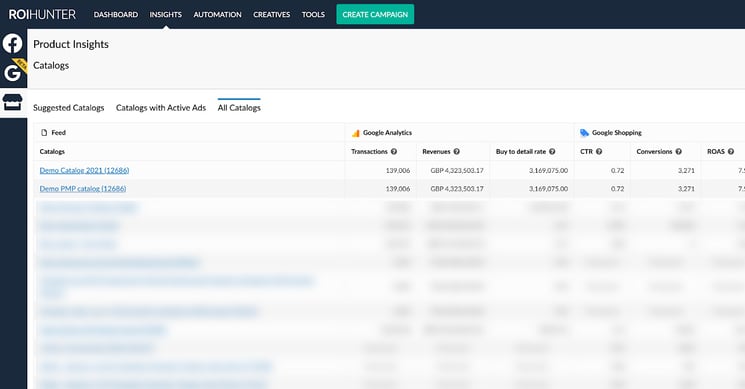
Step Two:
Create a filter to find all products in the Top 20% of Total Revenue per Google Analytics
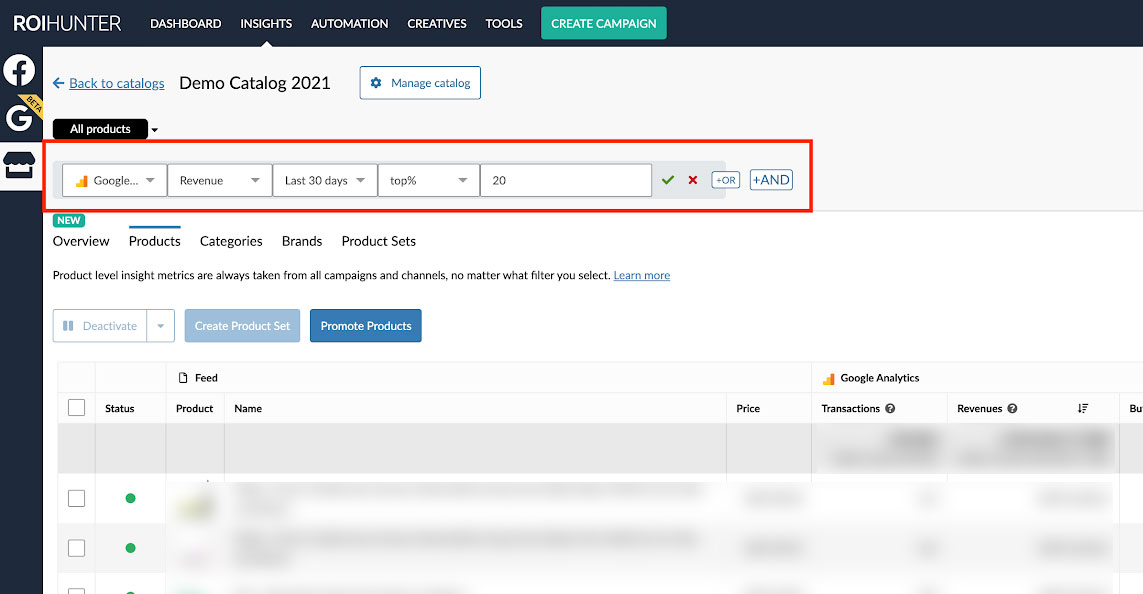
Step Three:
Choose your timeframe - Last 7 or 30 days depending on volume and turnaround speed
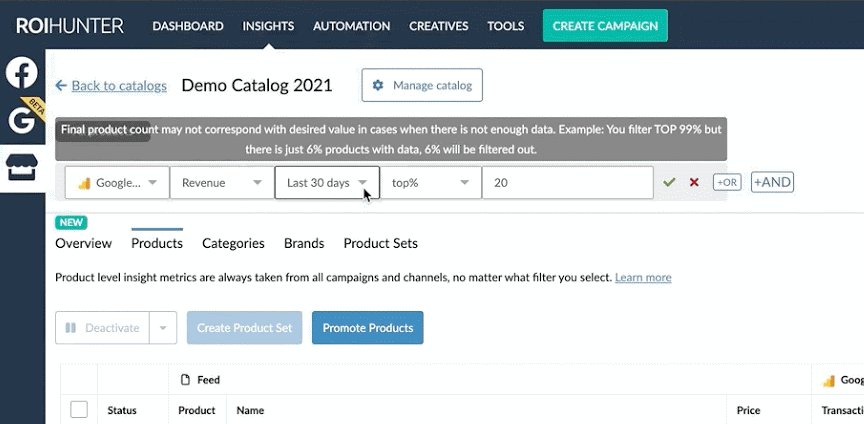
Step Four:
Experiment with different percentages (try the top 15%, the top 25%) to find the best results for your business
Bestseller behavior on Meta
When looking at Meta dynamic promotions in particular, we’ve found that 80% of the ad spend typically goes to 5% of the products.
Here’s a look at the distribution of spend for a standard Meta DABA campaign (dark blue line) and the distribution of Google Analytics revenue per item (navy color):
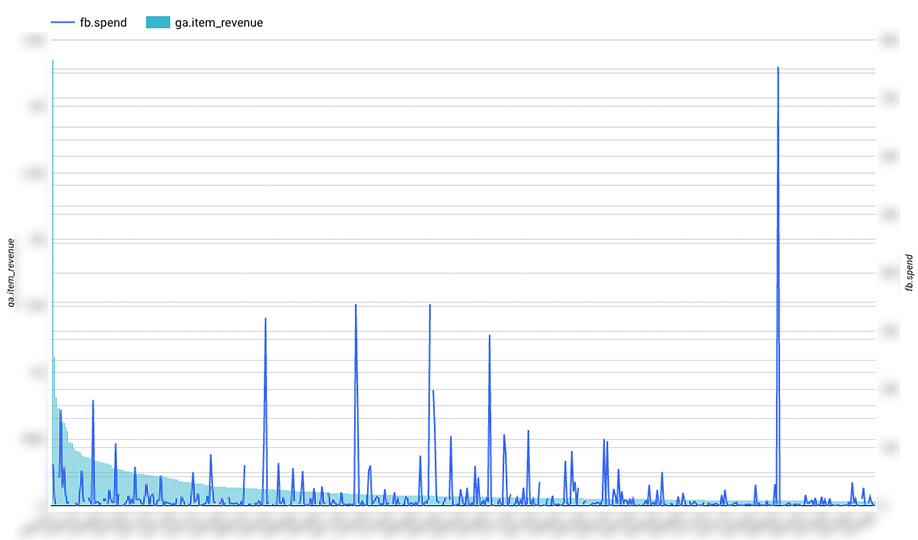
Notice the large peaks on the right? Those indicate when the budget is going to items that are not bestsellers. Despite massive spend on some products, the revenue is negligible. On the flip side, you can see areas on the left with high revenue and almost no promotion budget. Just imagine how much higher that revenue will be once we refocus the budget there.

“We always searched for a way to make the display of our products more personalized, and with ROI Hunter, we have been able to work on communications in a more practical and accurate way. With the insights section connected to Google Analytics and the Merchant Center, we were able to have a greater wealth of information, enabling the creation of much more strategic sets of products for the business.”
VICTOR MATSUMOTO, MEDIA ANALYST FOR TOK&STOK
Why are bestsellers better for scaling?

We’ve talked a lot about how to scale in this article, so let’s take a moment to slow down and examine what we really mean by “scaling.” From a business perspective, scaling means increasing revenue. From an ad buying perspective, it means maintaining a sustainable ROAS while increasing ad spend.
We’ve found that using a bestseller product set when scaling with DABA campaigns is more sustainable than using All Site DABA campaigns. When you increase the budget of a DABA campaign, the algorithm searches for a new product to promote with the added amount. If you’re running an All Site DABA, there’s a strong chance (likely around 80%) that the item picked will come from your longtail. If that happens, your ROAS will drop. If you’re running a bestseller DABA campaign, there’s no risk of a longtail product being selected for promotion.
Presenting the impact of campaigns
Marketing Team
Chances are, you’re on the marketing team at your company. To get the rest of your department on board with the bestseller strategy, focus on the scaling benefits.
Bestsellers are a more reliable way to scale than an All Site DABA campaign, because we can see in the data that they’ve had the most success with customers similar to those targeted in our prospecting campaigns.
Purchasing Team
To convince the purchasing team that the bestseller strategy is the right way forward, show them how much easier their purchase forecasting will be once they have definitive, regularly updated data on which products are selling the best, know the conversion rates, and know the ad spend behind the promotions.
The Big Boss
CEO, CMO, whomever the big boss is, the best way to get them on board is with big picture thinking. You can mention the more reliable scaling, the occasionally increased ROAS, but you can also include the inter-departmental collaboration that comes along with it. In order to set up the bestseller use case, you will connect your marketing and purchasing department to the same set of product-level data. Thinking even beyond the bestsellers, this direct connection between the teams will improve marketing’s understanding of which items to promote, and will improve the purchasing department’s understanding of what to order.
Final thoughts
If you’re only prospecting with an All Site DABA campaign, you’re missing an opportunity. Not only are you missing out on promoting your top selling products, but you’re wasting your budget promoting items your customers are less interested in.
Meta and Google have wonderful algorithms, and dynamic advertising in general has been a huge step forward for marketers. But it could still be better. Help the algorithms along by reducing the longtail, and focusing them on your bestsellers. Empower the algorithms with your knowledge of the business and your data.
Learn more about the Product Insights feature and how it works on our site, or speak with someone at ROI Hunter for details on how it could help your company.

